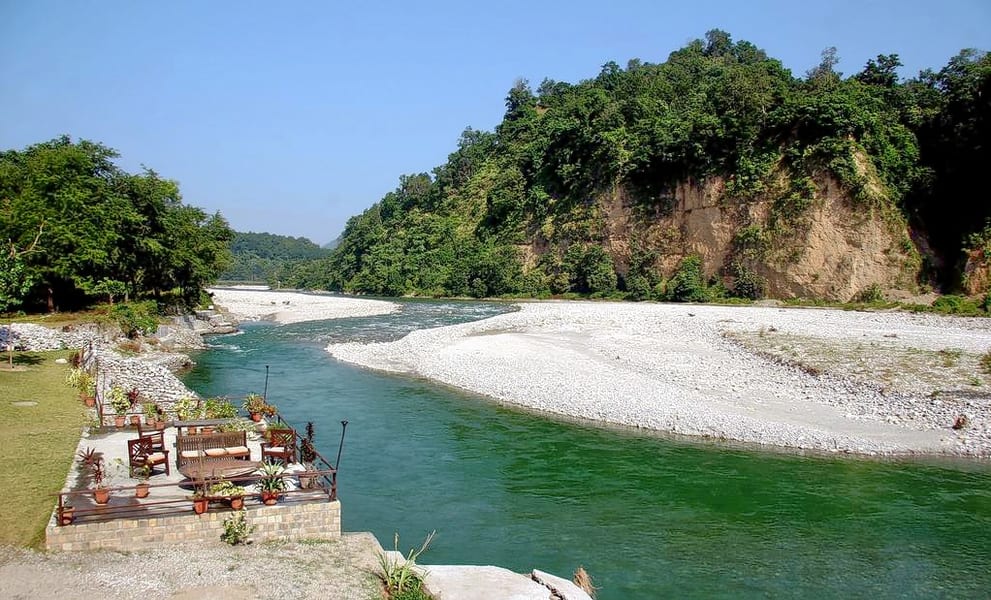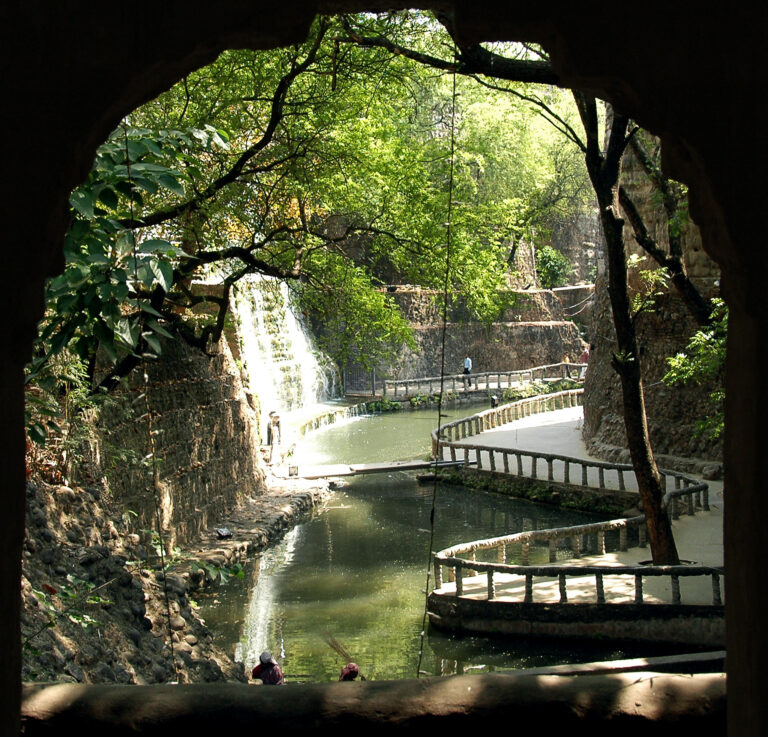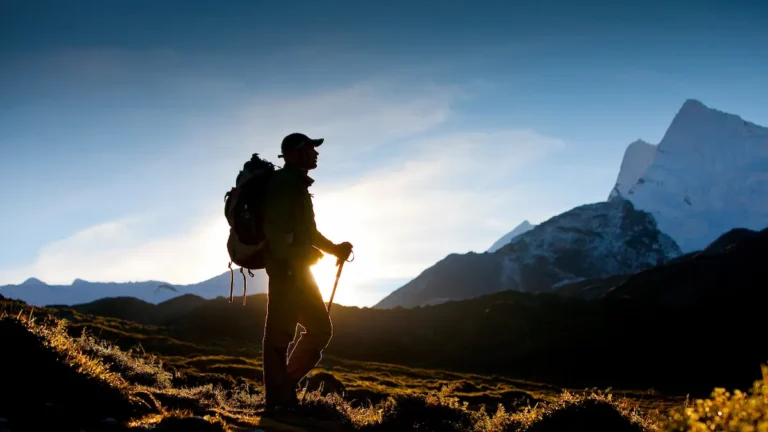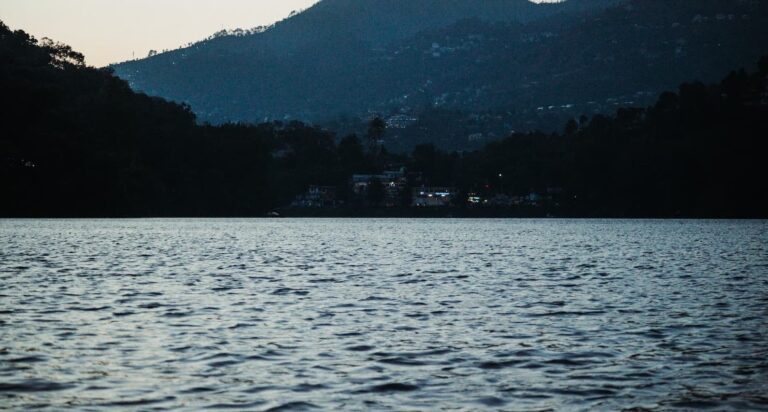The Kosi River flows through Jim Corbett National Park’s eastern edge, providing a scenic setting with a stunning view of the hills in the background and crystal-clear waters. It is inhabited by mahseer fish and draws a vast quantity of migratory birds. It is also popular for rafting, which is permitted with permission from the government.
The Kosi River runs along the southeastern edge of Jim Corbett National Park. It runs from Mohan to Ramnagar before reaching Dhikuli in the northern Indian state of Uttarakhand. The river does not enter the national park, but it does cross several important ranges of the sanctuary.
The river flows from Mohan to Dhikuli and then to Ramnagar, a small town near Nainital. This is a fantastic tourist site with lush green trees around the river, the presence of wild creatures that come to the riverside to drink water, and a terrific adventurous atmosphere.
The Kosi is actually a tributary of the Ramganga, the area’s main source of drinking water. The river flows graciously along the verdant valleys of the hill district before culminating in the Terai region of Uttar Pradesh. Locally known as the Kosila, the water resources of the Kosi river forms the rich vegetation and farmland of the Kumaun region. This is the source of life for the growing wildlife and forests of the entire Jim Corbett National Park.
The river flows gracefully through the verdant valleys of the hill district before reaching the Terai region of Uttar Pradesh. The water resources of the Kosi river, locally known as the Kosila, form the Kumaun region’s rich vegetation and farmland. This is the source of life for the Jim Corbett National Park’s growing wildlife and forests.

The flow of the river Kosi can be seen to be erratic as the riverbed of the river is filled with boulders. During the monsoon season, water runs in torrents in this river, making it a fantastic tourist attraction. Once the monsoon season is through, the river’s water is beautiful and peaceful. Enjoy some time in the sun by the river, go for a stroll nearby, and see some of the migratory birds that pass through the valley every year, while you can unwind and relax at Tree of Life, Resort in Ramnagar.
Attractions near Kosi River
- Dhikala: Dhikala is an important safari spot in Jim Corbett National Park. This is approximately 850 kilometers from the Kosi River and can be reached by car in 7 hours. The Dhikala range is located 50 kilometers inside the Corbett National Park and provides panoramic views of the green valley as well as excellent wildlife sightings. Dhangadi gate is Dhikala’s entry point. Visitors can see wild elephants, hog deer, chital, and a variety of migrating species.
- Corbett Museum: Corbett Museum is more than just a museum near Kaladhungi. This is a repository of information for history and wildlife enthusiasts. The incredible collections of adventurer Jim Corbett have been preserved here. You can spend at least two hours at the museum. The entry fee is Rs 10 for Indians and Rs 50 for international tourists.
- Garjiya Temple: This famous Shakti shrine in Uttarakhand is about 1100 kilometers from the Kosi river. At the shrine, the holy temple worships Girjiya Devi. Goddess Girjiya is another form of Parwati, the daughter of Giriraj, the lord of the Himalayan Mountains. You should plan on spending at least an hour at the temple, which is located in the middle of Ramnagar. It will take approximately 21 hours to reach the temple from the Kosi River.
- Jhirna: Jhirna, located approximately 1110 kilometers from the Kosi river region, is the southernmost point of Jim Corbett National Park. Here, one of the best animal sightings in the forest can be observed. Jhirna was once a village that has evolved over time into a dense forest and a natural habitat for numerous species of wildlife.
Best Time To Visit
The greatest time to visit the Kosi River Valley, Jim Corbett National Park, and its surrounding areas is from November to February. This time of year, the weather has a profound chill in the air yet is still really nice. You can get pretty close to the river and walk around the riverbed in various places as the water level drops during this period. This time of year sees a high volume of visitor traffic.
Monsoon hits in June, giving the Kosi one of its deadly yet beautiful incarnations. The river thunderously gushes across the rugged terrain. The raging stream occasionally causes little devastation in its route. It is a magnificent site to see from a distance for tourists. When you visit the riverbank, you will hear the roaring gurgle of the water as it rushes through the valley. Without a doubt, this is a key draw for many adventure travelers.
In the summer, the Kosi River Valley can be very pleasant. The temperature here does not cause discomfort while traveling. The river has a constant flow of water. You can dunk your feet in shallow water and engage in some angling activities.
The Kosi River runs along the southeastern edge of Jim Corbett National Park. It runs from Mohan to Ramnagar before reaching Dhikuli in the northern Indian state of Uttarakhand. The river does not enter the national park, but it does cross several important ranges of the sanctuary.
Featured Image credits: thrillophilia.com
Why Kosi River is famous?
The Kosi River is referred to as the “Sorrow of Bihar” due to the annual flooding of approximately 21,000 km2 (8,100 sq mi) of fertile agricultural land, which disrupts the rural economy. It has a discharge of 2,166 cubic metres per second (76,500 cu ft per second).
Where is Kosi River located?
The river Kosi is formed by the confluence of three streams that originate in the Himalayan region of Nepal and Tibet: the Sun Kosi, the Arun Kosi, and the Tamur Kosi. After the confluence, the Kosi flows through a 10 km-long narrow gorge before emerging into the Chatra plains. You can unwind and relax at our Resort in Ramnagar while embracing the Kosi river.
Where Kosi River joins Ganga?
After flowing an additional 260 kilometres (160 miles), the river joins the Ganges near Kursela after crossing into Bihar, India, near Bhimnagar.
Why the river Kosi is called sorrow?
The river earned the moniker “the sorrow of Bihar” due to the frequent annual floods that affect the state during the wet season.
Why is it called Kosi River?
In the upper course of the river, soil erosion and landslides produce one of the highest silt yields. This is the reason why it is known as the “Sorrow of Bihar.” Its annual flooding devastates the rural agricultural economy by wreaking havoc on an area of 21,000 square kilometres of fertile land.







